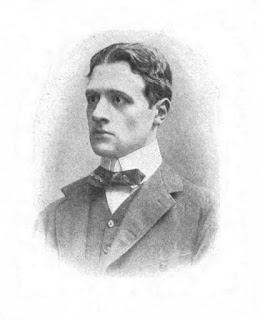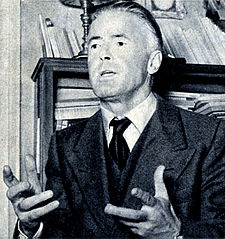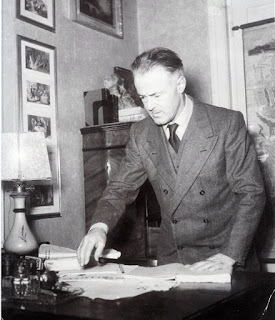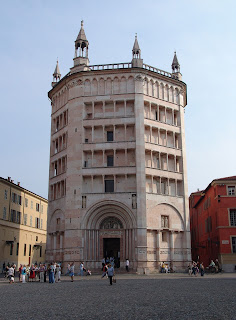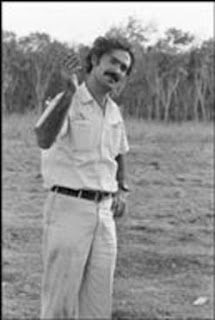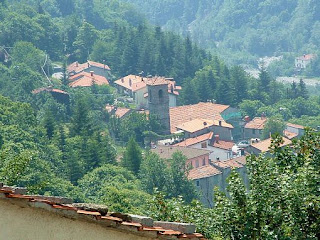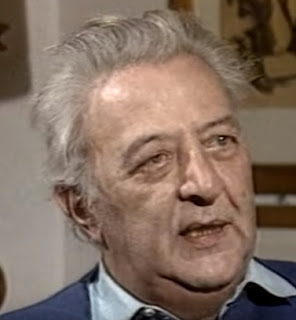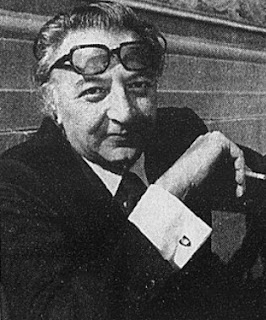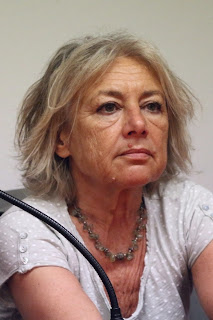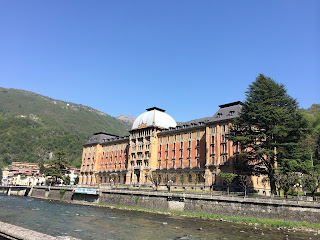One of 20th century Italy's most important authors
 |
| Italo Calvino was born in Cuba in 1923 but moved to Sanremo with his Italian-born parents in 1925 |
Calvino was regarded as one of the most important Italian writers of fiction of the 20th century. His best known works are the Our Ancestors trilogy, written in the 1950s, the Cosmicomics collection of short stories, published in 1965, and the novels, Invisible Cities, published in 1972 and If On A Winter’s Night A Traveller, published in 1979.
Both of Calvino’s parents were Italian, but he was born in Santiago de Las Vegas, a suburb of Havana in Cuba, in 1923, where his father, Mario, an agronomist and botanist, was conducting scientific experiments. Calvino’s mother, Eva, was also a botanist and a university professor. It is believed she gave Calvino the first name of Italo to remind him of his heritage.
Calvino and his parents left Cuba for Italy in 1925 and settled permanently in Sanremo in Liguria, where his father’s family had an ancestral home at San Giovanni Battista.
His family held the science subjects in greater esteem than the arts and Calvino, a prolific reader of stories as a child, is said to have ‘reluctantly’ studied agriculture.
Encouraged by his mother, he joined the Italian Resistance during the later stages of the Second World War, having gone into hiding rather than sign up for military service in Mussolini's Italian Social Republic. Using the battle name of Santiago, Calvino joined the Garibaldi Brigades, a clandestine Communist group. He became a member of the Italian Communist Party, although he would leave it in 1957 following the Soviet invasion of Hungary,
 |
| Calvino's first novel was published in 1947, inspired by his time with the Italian Resistance |
Calvino’s first novel was inspired by his time in the Italian Resistance. Il sentiero dei nidi di ragno - The path to the nest of spiders - published in 1947, sold more than 5000 copies and won the Premio Riccione prize.
He began writing fantasy and allegory in the 1950s. Il visconte dimezzato - the Cloven Viscount - was published in 1952, Il barone rampante - The baron in the Trees - in 1957 and Il cavaliere inesistente - the Nonexistent Knight - in 1959. These stories were to bring him international acclaim.
In an interview, Calvino once said that the scenery around his family home in Sanremo continued to pop out in his books.
In 1962 Calvino married Argentinian translator Esther Judith Singer in Havana. During the trip to Cuba he visited his birthplace and was introduced to Ernesto ‘Che’ Guevara.
Before meeting Singer he had had an affair with Italian actress Elsa De Giorgi, a married, older woman, which caused something of a scandal.
| Calvino's tomb in the village cemetery at Castiglione della Pescaia in Tuscany |
In later life, Calvino visited Mexico, Japan and the US, where he gave a series of lectures in different American towns. During the summer of 1985, Calvino prepared a series of texts on literature to be delivered at Harvard University in the autumn.
But in early September he was admitted to the ancient hospital of Santa Maria della Scala in Siena where he died on 19 September of a cerebral haemorrhage, aged 61. His lecture notes were published posthumously in Italian in 1988. They were published in English in 1993 as Six Memos for the Next Millennium.
At the time of his death he was the most translated contemporary Italian writer. He is buried at the cemetery in Castiglione della Pescaia.
 |
| The seaside resort of Sanremo was one of Italy's earliest destinations for foreign tourists |
Sanremo is an historic Italian holiday destination that was one of the first to benefit when the phenomenon of tourism began to take hold in the mid-18th century, albeit primarily among the wealthy. Several grand hotels were established and the Emperor Nicholas II of Russia was among the European royals who took holidays there. The Swedish chemist Alfred Nobel, founder of the Nobel Prize, made it his permanent home. The Italian Riviera resort is also famous as the home of the Sanremo Music Festival, the prestigious song contest that has been held every year since 1951 and which has launched the careers of many stars.
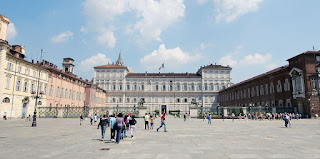 |
| Piazza Castello is at the heart of royal Turin, the city in Piedmont where Calvino lived after the Second World War |
Turin, where Calvino settled after his wartime experiences, is the capital city of the region of Piedmont in the north of Italy. It is an important business centre, particularly for the car industry, and has a rich history linked with the Savoy Kings of Italy. Piazza Castello, with the royal palace, royal library and Palazzo Madama, which used to house the Italian senate, is at the heart of royal Turin. Turin Cathedral was built between 1491 and 1498 in Piazza San Giovanni in Turin. The Chapel of the Holy Shroud, where the Turin Shroud is kept, was added in 1668. Some members of the House of Savoy are buried in the cathedral while others are buried in the Basilica di Superga on the outskirts of the city.
More reading:
How Cesare Pavese introduced the great American writers to Fascist Italy
The philosophy of Norberto Bobbio
Giuseppina Tuissa, heroine of the Garibaldi Brigades
Also on this day:
1898: The birth of Giuseppe Saragat, Italy's fifth president
1941: The birth of Umberto Bossi, fiery former leader of Lega Nord
The Festival of San Gennaro
Home







